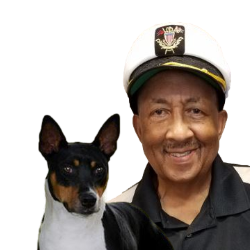How to train a dog post contains affiliate links. Learn more on my Affiliate Disclosure page.
Are you pumped to start the journey on how to train a dog? Remember, proper training and socialization are essential for your puppy's well-being. The sooner you train your dog to sit, stay, come, use their crate, and do their business outside, the better!
And guess what? Even if you're a newbie, you can handle this alone. Let's do this!
How To Train A Dog Tips
At first, the thought of how to train a dog can seem overwhelming. With so many things to consider and different techniques, it's easy to feel you're over your head. But don't worry – with patience and dedication. Anyone can train their puppy to be a well-behaved companion.
The key to success is starting early. Puppies are like sponges – they soak up everything around them, from sights and sounds to smells and tastes. When you begin training early, your puppy is more receptive than ever.
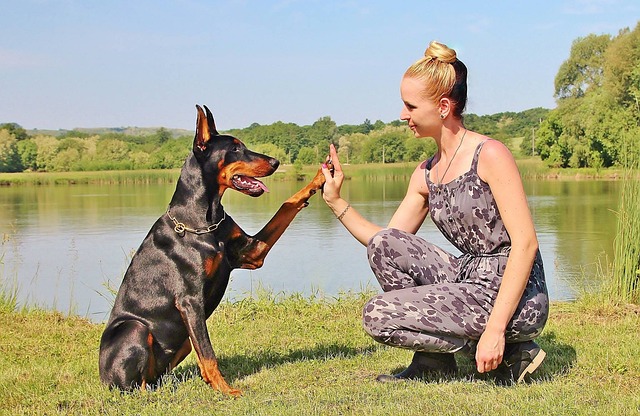
Therefore, you'll be able to establish good habits right from the beginning. Therefore, here are some tips to help get you started:
- Start with a certified dog obedience program: A professionally structured dog training program will teach you how to train a dog using proper techniques. Not only does it improve your pup's behavior, but it also provides mental stimulation and strengthens the owner-pet relationship.
- Set up a daily schedule of how to train a dog: A solid training structure will allow your puppy to learn quickly and effectively. It would help if you stuck to a consistent schedule.
- Incorporate games: One great way to keep them interested is by making their training fun. Not only will this keep them engaged, but it can also strengthen the bond between you and your pet.
- Positive reinforcement: A powerful tool when it comes to training your puppy. This method involves rewarding good behavior with treats, praise, or toys instead of punishing bad behavior. Not only is this approach more humane, but it's also more effective in the long run.
How To Train A Dog Basic Commands
Basic obedience training commands are the foundation of every good dog's education, and mastering them can lead to a more enjoyable life for you and your puppy.
Every dog parent must teach the six basic obedience commands: sit, lay, stay, come, heel, and leave it.
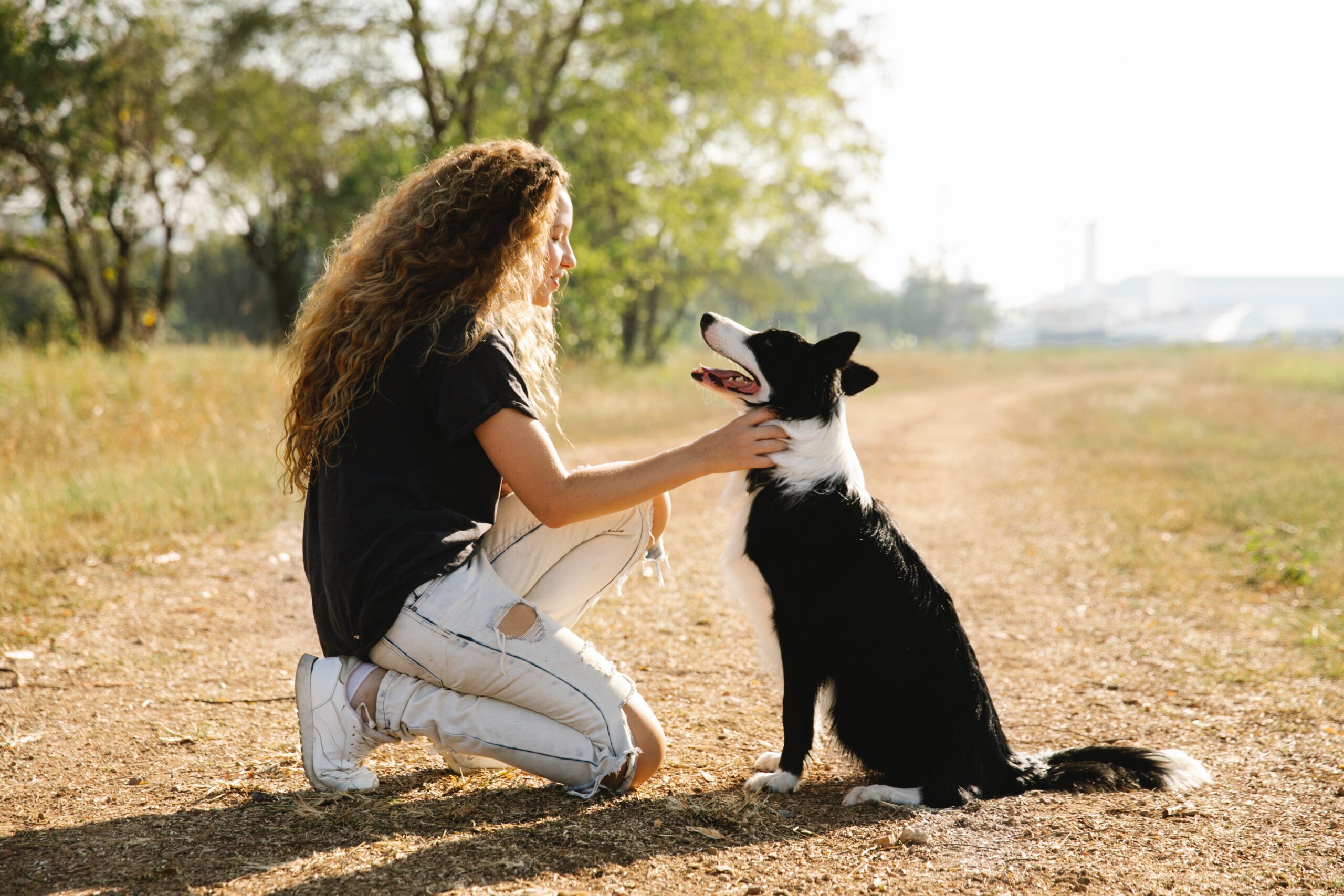
Training your dog is one of the most rewarding experiences you'll have as a pet owner. Basic obedience commands are essential for every dog to learn to make their life easier and ensure their safety and well-being.
Whether you're starting with a new puppy or an adult dog, teaching them how to sit, lay down, stay, come when called, and heel on a leash is essential.
The American Kennel Club has more helpful information about obedience dog training.
Positive Reinforcement Dog Training
Positive reinforcement has proven incredibly effective in training dogs to behave appropriately. The principle behind positive reinforcement is simple: if you reward a behavior, your dog is more likely to repeat it.
Positive reinforcement dog training is an effective and humane way to train your furry friend. This training method focuses on rewarding desired behaviors instead of punishing bad ones.
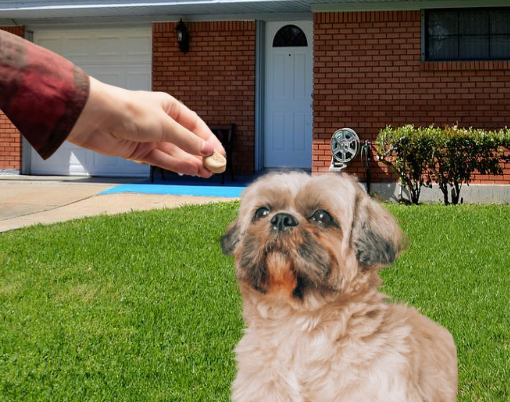
Positively reinforcing good behavior with treats, toys, or praise helps your dog learn what you want them to do and encourages them to repeat the behavior in the future.
One of the main benefits of positive reinforcement training is that it builds a strong bond between you and your pup. Instead of being afraid or anxious around you, your dog will be happy to please and excited to work alongside you.
Additionally, this type of training can be used for any breed or age, making it a versatile option for all pet owners.
So, if you're looking for a way to train your dog that's both effective and kind, consider using positive reinforcement techniques.
How To Train A Dog With Clicker
Dog clicker training is an excellent method to train your dog. It is a positive reinforcement technique. A hand-held clicker makes a clicking sound when pressed.
The clicker marks the exact moment your dog performs the desired behavior, making it easier for them to understand what they did right and repeat the action.
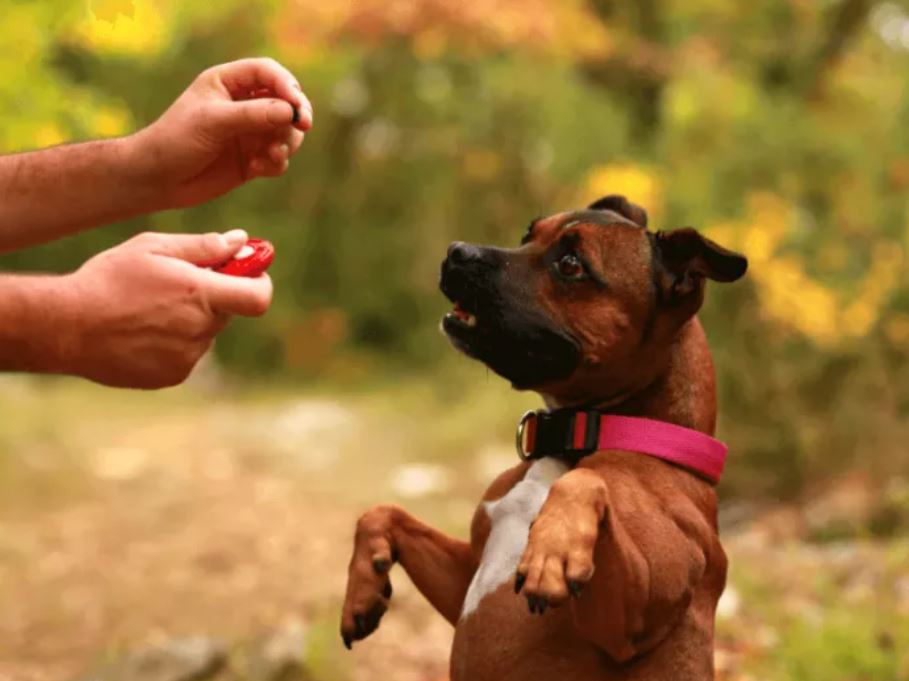
The first step in dog clicker training is to teach your puppy that the clicker's sound means something positive - treats! Use a high-value treat and let your pup sniff and lick it before clicking. It will help them associate the sound with something they love, increasing their motivation to continue learning.
How To Train A Dog New Tricks
The first step in advanced dog training is mastering basic commands such as sit, stay, come, and heel. Once your dog has these fundamental skills, it's time to move on to more complex tasks such as agility training or obedience trials.
Advanced dog training activities require a lot of focus and discipline from the owner and the pet.
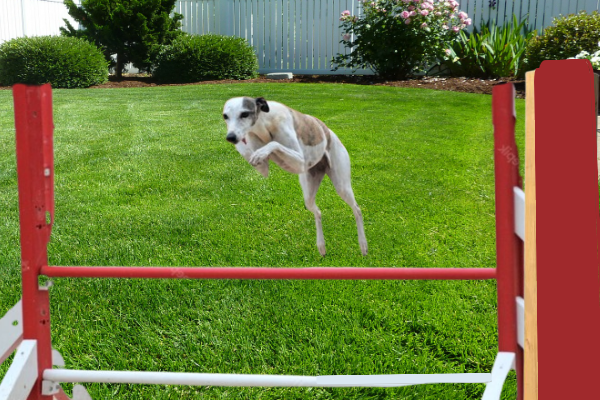
One essential tool for advanced dog training is positive reinforcement. It involves rewarding good behavior with treats or praise. It encourages your dog to repeat it. In addition to positive reinforcement, it's essential to remain patient when teaching new skills.
K9 Training Institute Free Workshop
The K9 Training Institute offers a free workshop where you can learn firsthand their effective training methods.
The Free Workshop emphasizes building a solid bond between you and your pup. They explain how to apply positive reinforcement techniques that make learning enjoyable for dogs and their owners.
Does your dog tug on its leash, bark constantly, and won't come when called? Sign Up and get the FREE Obedience Training Workshop Now!
Sign up today and start building a better bond with your puppy!
House Dog Training Simplified
House dog training can be challenging, especially if you've never trained a dog. But the good news is that anyone can do it with patience and persistence.
The first step in house dog training is establishing clear boundaries and rules for your puppy. Decide where they can go in the house and what items they cannot touch or chew on.
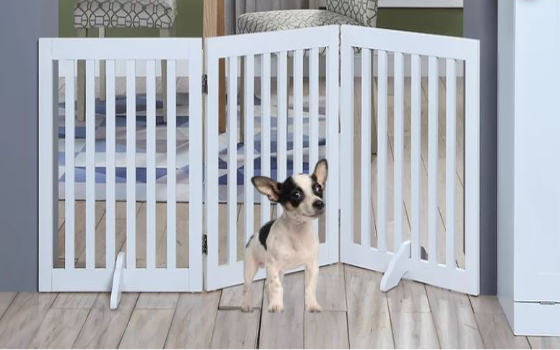
house dog training
Consistency is vital here – ensure everyone enforces the same house rules so your puppy doesn't get confused. How do you reward good behavior? You give treats or praise. Positive reinforcement will motivate your puppy to continue behaving well.
How To Train A Dog Use Crate
Using a crate for dog training is an excellent method to train your puppy. Not only does it help dogs learn self-control, but it also provides them with a safe and comfortable space to call their own.
If you're struggling with potty training, destructive chewing, or separation anxiety issues, crate training may be your solution.
Types of Dog Crates Furniture
Crate training is essential; you should make it a positive experience.
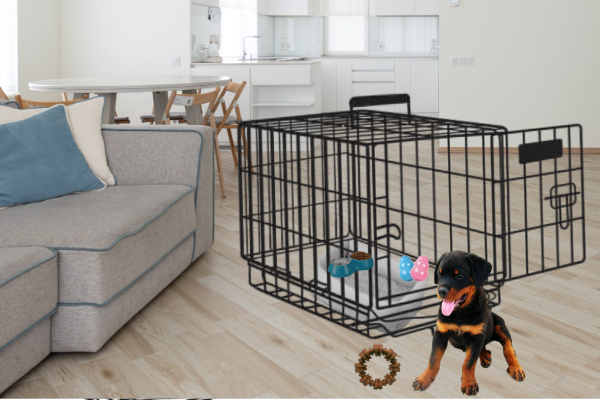
One of the great benefits of crate training is that it helps with housebreaking. Dogs naturally avoid soiling their sleeping area, so keeping them in a correct-sized crate will make them less likely to have accidents inside the house.
Additionally, crates can help reduce separation anxiety by providing your dog with a familiar space they feel comfortable when you're away from home.
Make Crate A Positive Experience
When beginning crate training, it's essential to introduce the crate as a positive, safe place to relax. And not be a punishing tool. Put your puppy's favorite toys and treats inside the crate to encourage them to explore.
Start by gradually closing the door for short periods while you are home. Eventually, your puppy will discover the crate is its comfortable and safe place. Slowly increase the time they spend inside while you're away until they can stay there for several hours.
How To Leash Train A Dog
Are you struggling to take your dog for a walk without them pulling, tugging, or even worse - running away? Fear not, as leash training can be the solution to all of your problems!
Introducing your dog or puppy to the leash can be overwhelming initially, but with patience and persistence, it's easier than you think. Start by showing them the leash and letting them sniff it before slowly attaching it to their collar.
Remember that some dogs may need a few days to be familiar with the leash around their neck before moving forward.
Once they're comfortable with the leash attached, start walking around inside your house or backyard while holding onto it.
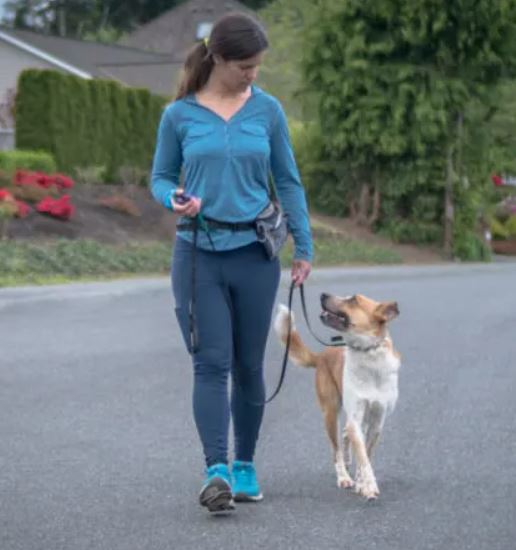
Keeping these initial walks short and positive is essential so that they associate the leash with fun experiences rather than punishment. As they get more confident, gradually increase the length of your walks before hitting the streets.
The Best Way How To Socialize Dogs
Socialization dog training is essential. It involves exposing your puppy or adult dog to different people, animals, and various places so that they can learn how to behave around them.
Socializing your pet helps to prevent aggressive behavior, fearfulness, and shyness.
The earlier you start socializing your puppy, the better he will adapt to new situations. Introduce him to different environments, such as parks, crowded streets, and shops.
Encourage him to interact with other dogs and humans by taking him on walks or visiting friends with pets. Praise him when he behaves well around strangers or unfamiliar animals.
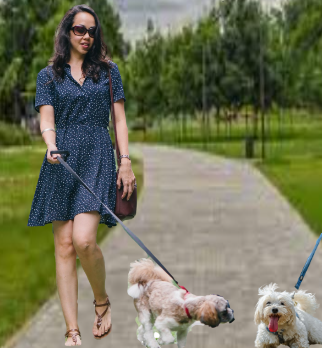
It is always possible to socialize your dog, and here is how to do it. Start by slowly introducing your puppy to new people and animals in a controlled environment, such as a quiet park or fenced backyard.
Most Common Dog Behavior Problems
As much as we love our furry friends, there's no denying that dogs can sometimes display troublesome behaviors.
Barking incessantly or chewing up your favorite pair of shoes, these issues can significantly frustrate pet owners. Fortunately, you can correct these unwanted behaviors.
Jumping up on people is one of the most common dog behavior problems. While it may seem harmless initially, jumping can quickly become a nuisance - especially if your puppy has muddy paws or is prone to knocking over kids or elderly individuals.
Separation anxiety is a prevalent problem among dogs. This condition occurs when a dog becomes panicked or distressed when their owner leaves the house.
One of the best ways to tackle any behavior problem is through training. Training your dog not only helps to solve problems but also strengthens your bond with them.
Whether it's potty training or teaching basic commands like "sit" and "stay," consistency and positive reinforcement are key.
Remember, dogs respond well to praise and rewards, so use treats or toys to show them they've done something right.
How To Train A Dog ~ FAQ
- How to train a dog not to run away? Firstly, start by establishing boundaries. Teach your dog that there are certain areas where they cannot go without permission. Use positive reinforcement like treats and praise when they obey these rules.
Secondly, make sure your dog is well-exercised and mentally stimulated. A tired puppy is less likely to run away as it has already expended energy playing or walking with you.
Lastly, consider investing in obedience training classes or hiring a professional trainer to teach your pup commands like "come" and "stay." These skills will be helpful when you need to call them back quickly.
- How to train a dog not to pay attention to other dogs? The first step is to establish a sound foundation of obedience. Once they have mastered these commands, gradually introduce distractions such as toys or treats when practicing obedience drills.
Next up is exposing your puppy to other dogs in controlled settings. Start with low-intensity situations, such as walking past another dog on the opposite side of the street. Reward them for focusing on you rather than fixating on the other dog.
- How do you train a dog not to jump on people? Dogs tend to jump to greet or show excitement, and sometimes they may seek attention from their owners or guests. To prevent this behavior, teach your puppy basic obedience commands like "sit" and "stay."

